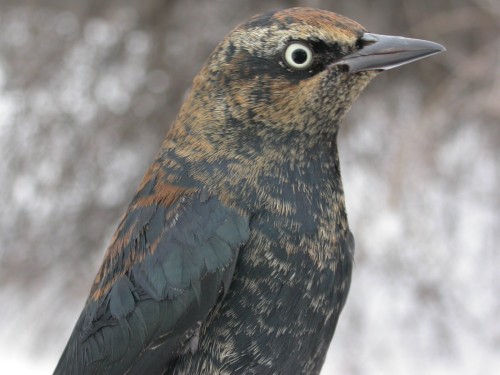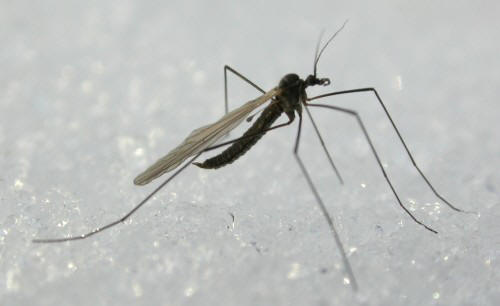|
McGILL BIRD OBSERVATORY |
|||||||||||||||||||||||||||||||||||||||||||||||
Welcome to the McGill Bird Observatory weekly report. Click here for a complete listing of our archives. Comments or questions are welcome at mbo@migrationresearch.org.
Bander-in-charge:
Marcel Gahbauer Notes: A warm spell gave us an opportunity to band twice this week, and we were amply rewarded for our efforts. The highlight was the opportunity to band "Blackie", the male Rusty Blackbird that has been hanging around the feeders for the past month. He has shown great tolerance for our presence at the feeders when we refill them, often watching from the protective safety of the large hawthorn clump in the midst of the net array. True to form, he was well behaved in the hand while being banded. Also of note, we banded our first two Common Redpolls of the season on Thursday. We are recording the extent of pink on each individual according to the Redpoll Pink Code developed at Innis Point Bird Observatory. These first two birds had only the slightest hint of pink freckles on their cheeks, so we hope to put the code to more of a test when we catch some of the more colourful individuals we have seen at the feeders. Meanwhile, the most commonly banded species on each of our two outings was the Slate-coloured Junco, which seems to be overwintering in much larger numbers than last year. This week we had a considerably higher than usual proportion of returns, i.e. birds that we have not documented in over three months. For most of them, the period of absence was actually much longer than the prescribed minimum. A male House Sparrow banded on November 22, 2004 and not caught again until this Thursday set a new MBO record for longest period in between captures - just barely eclipsing the male American Goldfinch caught Friday, and last recorded December 4, 2004. The goldfinch return is particularly interesting in that we see flocks of them come and go throughout the seasons, but this demonstrates that at least some individuals show fidelity to wintering grounds. For the first time in over a month, we were able to get the weekly total up to 20 species. This included our first Bohemian Waxwings of the winter, a flock of 11 flying toward the Arboretum on Friday, and our first sightings of Pileated Woodpecker, Cooper's Hawk, and Red-winged Blackbird this year. The warm sunshine on Friday afternoon even coaxed a couple of Northern Cardinals and House Finches into song, and delivered our first insect sighting of the year (see photo below)!
|



